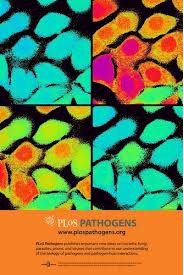
2013年8月19日 讯 /生物谷BIOON/ –近日,来自诺丁汉大学的研究者通过研究,揭开了一种新方法来抑制致病菌-铜绿假单胞菌的毒力和其致病性,相关研究成果刊登于国际杂志PLoS Pathogens上。
细菌可以产生很多毒性因子而且对许多传统抗生素都表现出耐药性,目前对于医生来说几乎不可能消灭囊性纤维化病人肺部中的铜绿假单胞菌,因此该菌也是导致患者死亡的主要原因之一,其同事也可引发住院病人患其它疾病。
这项研究中研究者重点研究了,铜绿假单胞菌可以通过产生并且感知小分子化学信号分子来实现细菌之间的“交流”,这就是群体感应系统(Quorum Sensing,QS),其可以帮助细菌之间进行实时通讯并且做出重大“决策”。细菌QS信号系统的分子机制就是通过QS信号分子与受体蛋白质之间的相互作用来激活基因的表达;在组多感染性疾病中,QS系统可以控制许多和感染相关的基因,这些基因可以编码诸如毒素等毒性因子,通过干扰QS信号通路就可以阻断细菌的毒力发挥以及后续的感染过程,而且研究者表示,QS系统也可以作为开发抗感染药物的新型靶点来帮助科学家开发有效的疗法来治疗感染性疾病。
在文章中,研究者揭示了其如何解析铜绿假单胞菌中一种名为PqsR的受体蛋白的3D结构,细菌可以利用PqsR来感应烷基喹诺酮类QS信号分子,以便其可以寻找到QS信号分子在PqsR蛋白上的结合位点。
研究者Paul Williams说道,我们可以通过合成的方法以及筛选出一些适合PqsR结合位点的化合物,从而阻断通过QS信号分子引发的受体激活过程,开发这种合适的化学分子就可以抑制QS信号通路,通过深入的化学精炼过程,研究者将开发出新型的QS信号抑制子,从而来阻断铜绿假单胞菌的QS信号转导过程,最终阻断细菌的毒力基因的表达。
本文的这项研究工作为科学家们将来开发的抗菌疗法的评估以及开发新型的抑制细菌QS系统的化合物提供了很多思路和希望,相关研究由生物技术和生物科学研究委员会提供资助。(生物谷Bioon.com)

doi:10.1371/journal.ppat.1003508
PMC:
PMID:
Structural Basis for Native Agonist and Synthetic Inhibitor Recognition by the Pseudomonas aeruginosa Quorum Sensing Regulator PqsR (MvfR)
Ilangovan A, Fletcher M, Rampioni G, Pustelny C, Rumbaugh K, et al.
Bacterial populations co-ordinate gene expression collectively through quorum sensing (QS), a cell-to-cell communication mechanism employing diffusible signal molecules. The LysR-type transcriptional regulator (LTTR) protein PqsR (MvfR) is a key component of alkyl-quinolone (AQ)-dependent QS in Pseudomonas aeruginosa. PqsR is activated by 2-alkyl-4-quinolones including the Pseudomonas quinolone signal (PQS; 2-heptyl-3-hydroxy-4(1H)-quinolone), its precursor 2-heptyl-4-hydroxyquinoline (HHQ) and their C9 congeners, 2-nonyl-3-hydroxy-4(1H)-quinolone (C9-PQS) and 2-nonyl-4-hydroxyquinoline (NHQ). These drive the autoinduction of AQ biosynthesis and the up-regulation of key virulence determinants as a function of bacterial population density. Consequently, PqsR constitutes a potential target for novel antibacterial agents which attenuate infection through the blockade of virulence. Here we present the crystal structures of the PqsR co-inducer binding domain (CBD) and a complex with the native agonist NHQ. We show that the structure of the PqsR CBD has an unusually large ligand-binding pocket in which a native AQ agonist is stabilized entirely by hydrophobic interactions. Through a ligand-based design strategy we synthesized and evaluated a series of 50 AQ and novel quinazolinone (QZN) analogues and measured the impact on AQ biosynthesis, virulence gene expression and biofilm development. The simple exchange of two isosteres (OH for NH2) switches a QZN agonist to an antagonist with a concomitant impact on the induction of bacterial virulence factor production. We also determined the complex crystal structure of a QZN antagonist bound to PqsR revealing a similar orientation in the ligand binding pocket to the native agonist NHQ. This structure represents the first description of an LTTR-antagonist complex. Overall these studies present novel insights into LTTR ligand binding and ligand-based drug design and provide a chemical scaffold for further anti-P. aeruginosa virulence drug development by targeting the AQ receptor PqsR.

